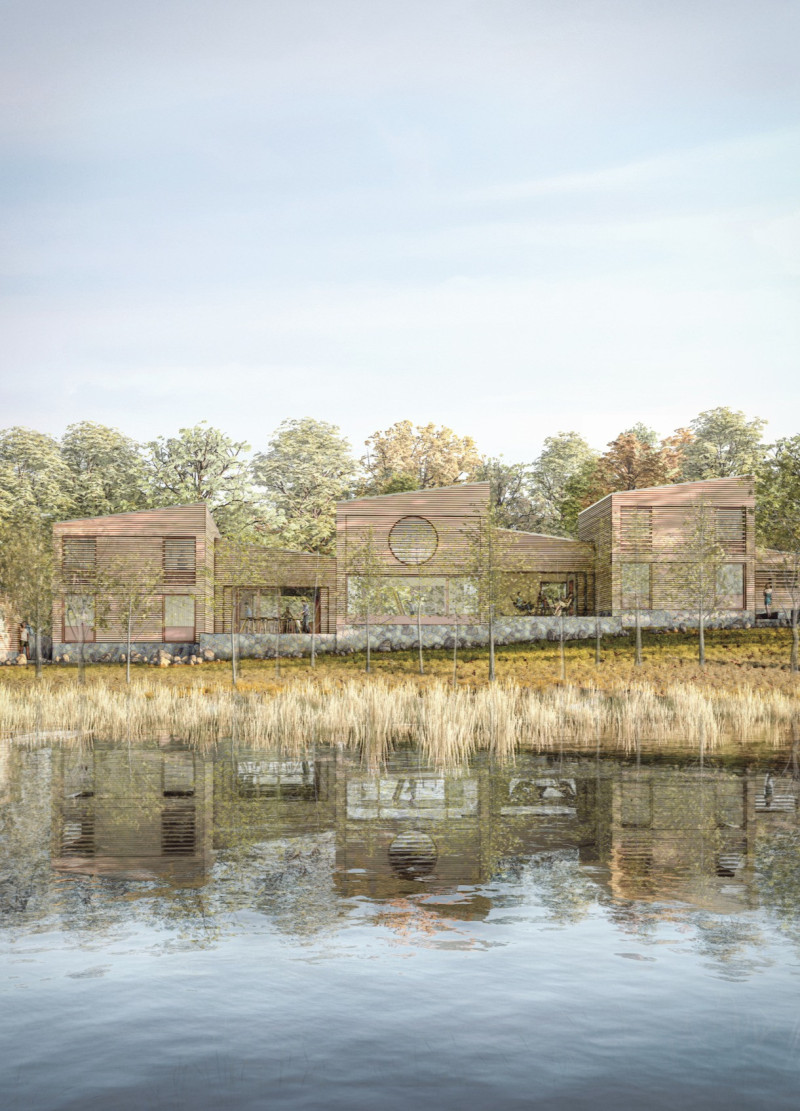5 key facts about this project
The Painters' Lake House is located beside Lake Cernostes, designed to be a retreat for two painters and their families. The goal is to foster a close relationship between the living spaces and the natural surroundings, encouraging artistic thought and family connection. The design consists of a series of small pavilions that interact with the landscape, enhancing the experience of those inside.
Design Layout
The layout includes seven pavilions arranged thoughtfully among existing trees in the garden. Each structure is oriented to provide views of the lake while maintaining privacy for the occupants. Bedrooms and the workshop extend toward the water, ensuring ample natural light enters these creative spaces. Meanwhile, communal areas such as the living room and kitchen are set back, creating sheltered spaces for gatherings and conversations, protected from the wind.
Spatial Relationships
Large windows are a key feature of the design, allowing for an easy flow between inside and outside. The workshop has a prominent picture window seat that frames the lake, offering a place for reflection and ideas to form. This design choice enhances the connection between the artists' work and the surrounding environment, making it easier to draw inspiration from the ever-changing scenery.
Sustainable Practices
Sustainability is a fundamental aspect of the project. The design utilizes local timber and stone, aligning with the traditional building styles found in the Latgale region. These materials blend the buildings into their surroundings while reducing the carbon footprint associated with transport. The cabins are raised on a stone base that follows the natural slope of the land, creating a respectful relationship with the environment.
Ecological Consideration
The sloped roofs of the cabins are intentionally designed to support a layer of sedum, encouraging local plant life. This feature not only adds to the visual interest of the structures but also contributes to the ecology of the area. Additionally, the inclusion of bat roosts in the design shows a commitment to preserving local wildlife. Each detail in the project reinforces the aim of balancing human habitation with the natural world.
The careful design choices result in spaces that encourage creativity and reflection, where each pavilion offers distinct views and connections to the lake, enhancing the overall artistic experience and connection to nature.






















































